
Chinese mythology is mythology that has been passed down in oral form or recorded in literature throughout the area now known as Greater China. Chinese mythology encompasses a diverse array of myths derived from regional and cultural traditions. Populated with engaging narratives featuring extraordinary individuals and beings endowed with magical powers, these stories often unfold in fantastical mythological realms or historical epochs. Similar to numerous other mythologies, Chinese mythology has historically been regarded, at least partially, as a factual record of the past.
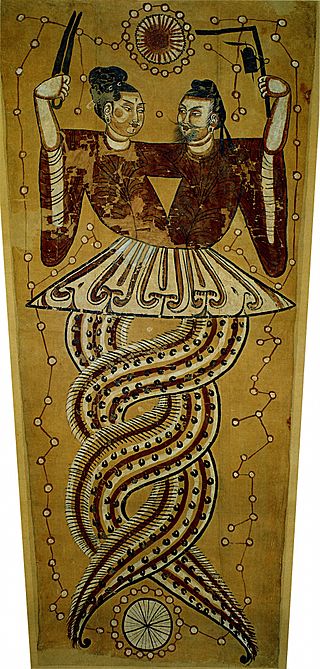
Fuxi or Fu Hsi (伏羲) is a culture hero in Chinese mythology, credited along with his sister and wife Nüwa with creating humanity and the invention of music, hunting, fishing, domestication, and cooking as well as the Cangjie system of writing Chinese characters around 2900 BC or 2000 BC. Fuxi was counted as the first mythical emperor of China, "a divine being with a serpent’s body" who was miraculously born, a Taoist deity, and/or a member of the Three Sovereigns at the beginning of the Chinese dynastic period.
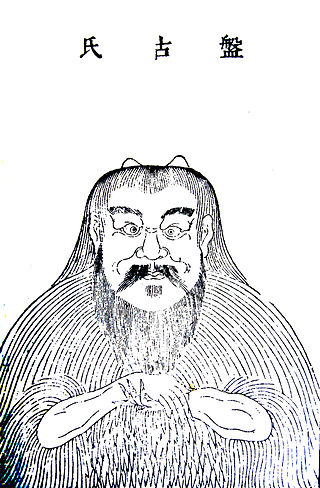
Pangu is a primordial being and creation figure in Chinese mythology and Taoism who separated heaven and earth, and his body later became geographic features such as mountains and rivers.

Nüwa, also read Nügua, is a mother goddess, culture hero, and/or member of the Three Sovereigns of Chinese mythology. She is a goddess in Chinese folk religion, Chinese Buddhism, Confucianism and Taoism. She is credited with creating humanity and repairing the Pillar of Heaven.

Yinglong is a winged dragon and rain deity in ancient Chinese mythology.
Gonggong is a Chinese water god who is depicted in Chinese mythology and folktales as having a copper human head with an iron forehead, red hair, and the body of a serpent, or sometimes the head and torso are human, with the tail of a serpent. He is destructive and is blamed for various cosmic catastrophes. In all accounts, Gonggong ends up being killed or sent into exile, usually after losing a struggle with another major deity such as the fire god Zhurong.
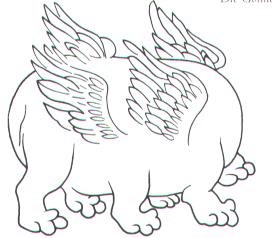
Hundun is both a "legendary faceless being" in Chinese mythology and the "primordial and central chaos" in Chinese cosmogony, comparable with the world egg.
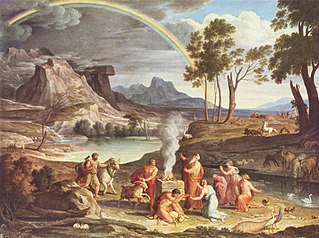
The rainbow has been a favorite component of mythology throughout history among many cultures around the world. Abrahamic traditions see it as a covenant with God to preserve the world from a second flood. Whether as a bridge to the heavens, messenger, archer's bow, or serpent, the rainbow has served as a symbol for millennia. There are myriad beliefs in a complex diversity with several repeated themes.
The Epic of Darkness is a collection of tales and legends of primeval China in epic poetry, preserved by the inhabitants of the Shennongjia mountain area in Hubei. It is composed of numerous Chinese myths relating to the creation of the world, containing accounts from the birth of Pangu till the historical era. It dates back to the Tang dynasty of China. It was translated and published by Hu Chongjun after the discovery of a manuscript in 1982.

Snakes are a common occurrence in myths for a multitude of cultures. The Hopi people of North America viewed snakes as symbols of healing, transformation, and fertility. Snakes in Mexican folk culture tell about the fear of the snake to the pregnant women where the snake attacks the umbilical cord. The Great Goddess often had snakes as her familiars—sometimes twining around her sacred staff, as in ancient Crete—and they were worshipped as guardians of her mysteries of birth and regeneration. Although not entirely a snake, the plumed serpent, Quetzalcoatl, in Mesoamerican culture, particularly Mayan and Aztec, held a multitude of roles as a deity. He was viewed as a twin entity which embodied that of god and man and equally man and serpent, yet was closely associated with fertility. In ancient Aztec mythology, Quetzalcoatl was the son of the fertility earth goddess, Cihuacoatl, and cloud serpent and hunting god, Maxicoat. His roles took the form of everything from bringer of morning winds and bright daylight for healthy crops, to a sea god capable of bringing on great floods. As shown in the images there are images of the sky serpent with its tail in its mouth, it is believed to be a reverence to the sun, for which Quetzalcoatl was also closely linked.
Chinese creation myths are symbolic narratives about the origins of the universe, earth, and life. Myths in China vary from culture to culture. In Chinese mythology, the term "cosmogonic myth" or "origin myth" is more accurate than "creation myth", since very few stories involve a creator deity or divine will. Chinese creation myths fundamentally differ from monotheistic traditions with one authorized version, such as the Judeo-Christian Genesis creation narrative: Chinese classics record numerous and contradictory origin myths. Traditionally, the world was created on Chinese New Year and the animals, people, and many deities were created during its 15 days.

Incest is found in folklore and mythology in many countries and cultures in the world.
The Flood Mythology of China, or Great Flood of China is a deluge theme which happened in China. Derk Bodde (1961) stated that "from all mythological themes in ancient Chinese, the earliest and so far most pervasive is about flood." The mythology also has shared characteristics with other Great Floods all over the world, although it also has unique characteristics or different focuses. Lu Yilu (2002) groups all versions of great flood into three themes: "the heroes controls the flood; "brother-sister marriage to repopulating the world"; and "the flood which is drowning the whole city along with its citizens".
The sinking city myth is one of the great flood themes in Chinese folklore. This myth includes three specific characteristics: one or two survivors; a blood-crying statue; and the sinking of an entire city, along with its citizens. The survivor(s) are saved by the gods because of their benevolent acts; the survivors may include an old lady or a devoted son. The blood-crying statue is often a stone lion statue, or sometimes a tortoise statue.

Chinese gods and immortals are beings in various Chinese religions seen in a variety of ways and mythological contexts.
Coqsseʻleelʻee is a legendary character in the mythology of Nakhi people. He was recorded in the Naxi epic Coqbertv Zherlzzoq as the ancestor of human being.
Huaxu (华胥) is a Chinese goddess and mother of the gods Nüwa and Fuxi,whose hometown is a region that is part of modern day Huaxu Township(华胥镇), Lantian County.
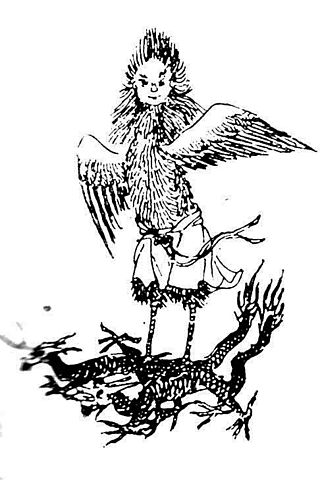
Goumang, also known as Jumang (句芒), is an auxiliary god of the Fuxi family. The Classic of Mountains and Seas described his appearance as "bird body and human face, ride two dragons". He is the god of wood and spring, in charge of life and health.










